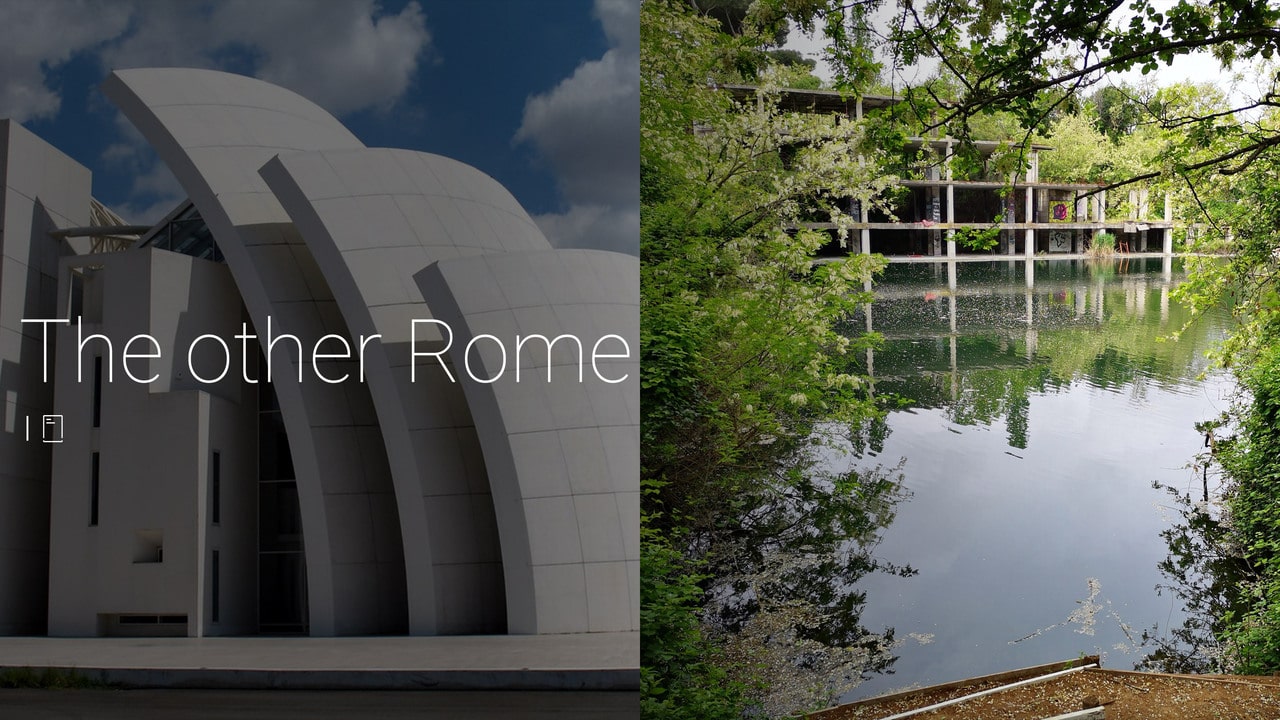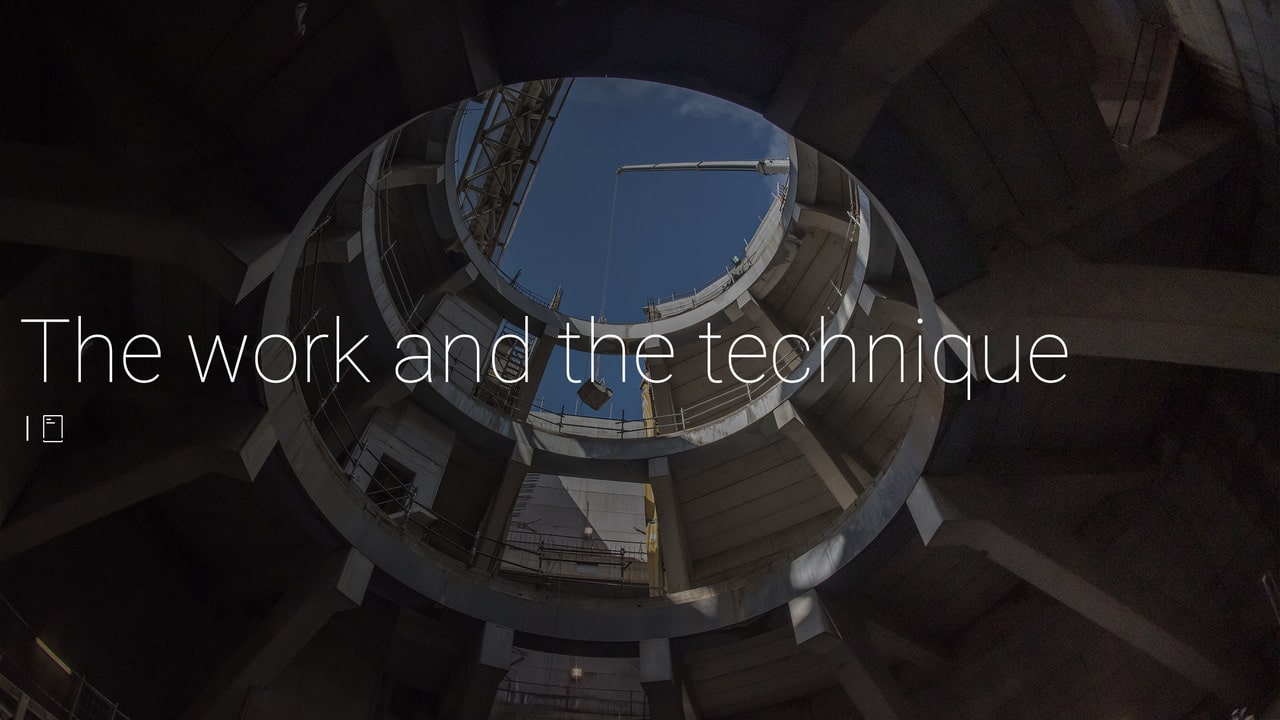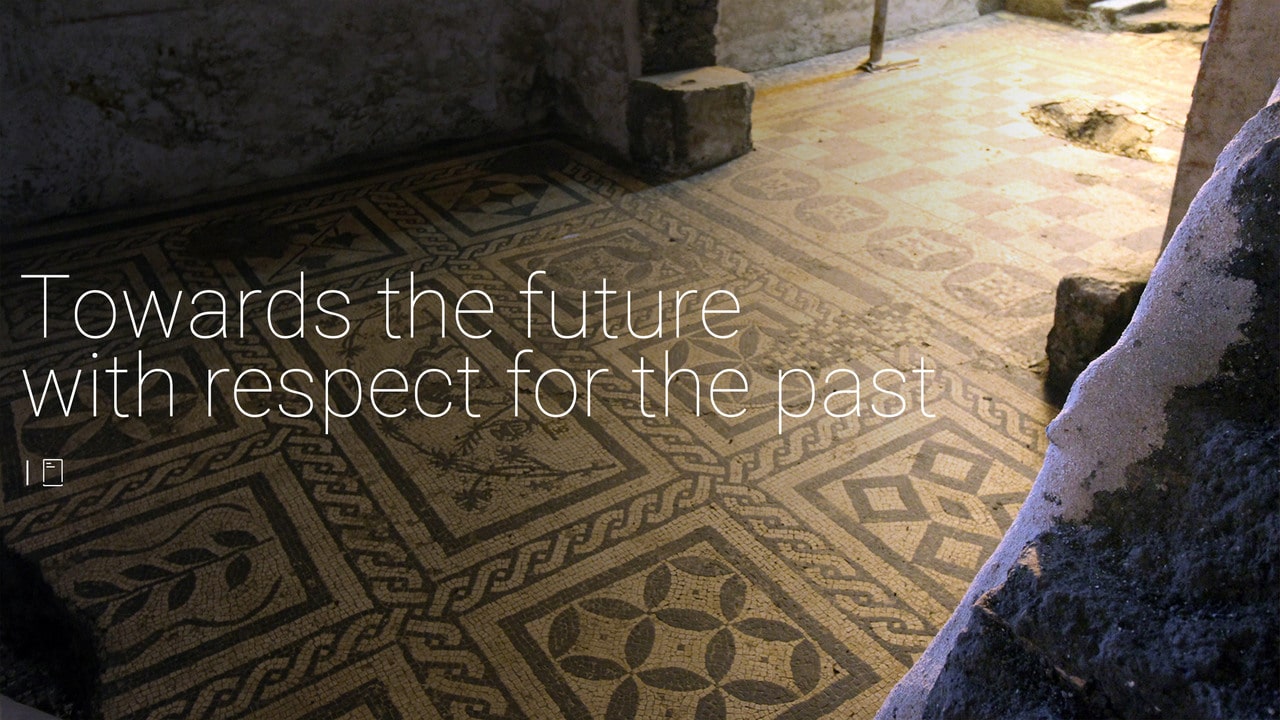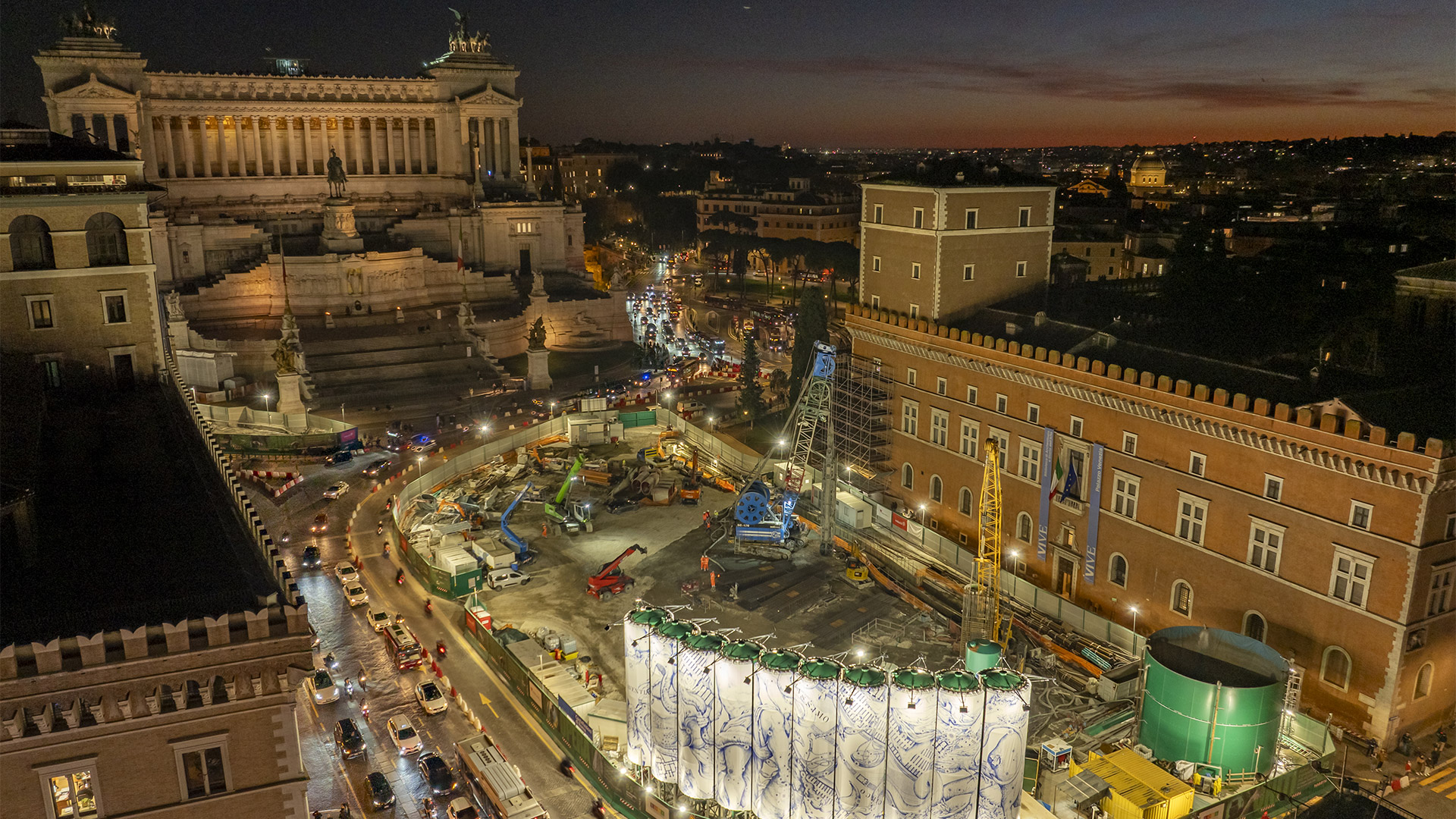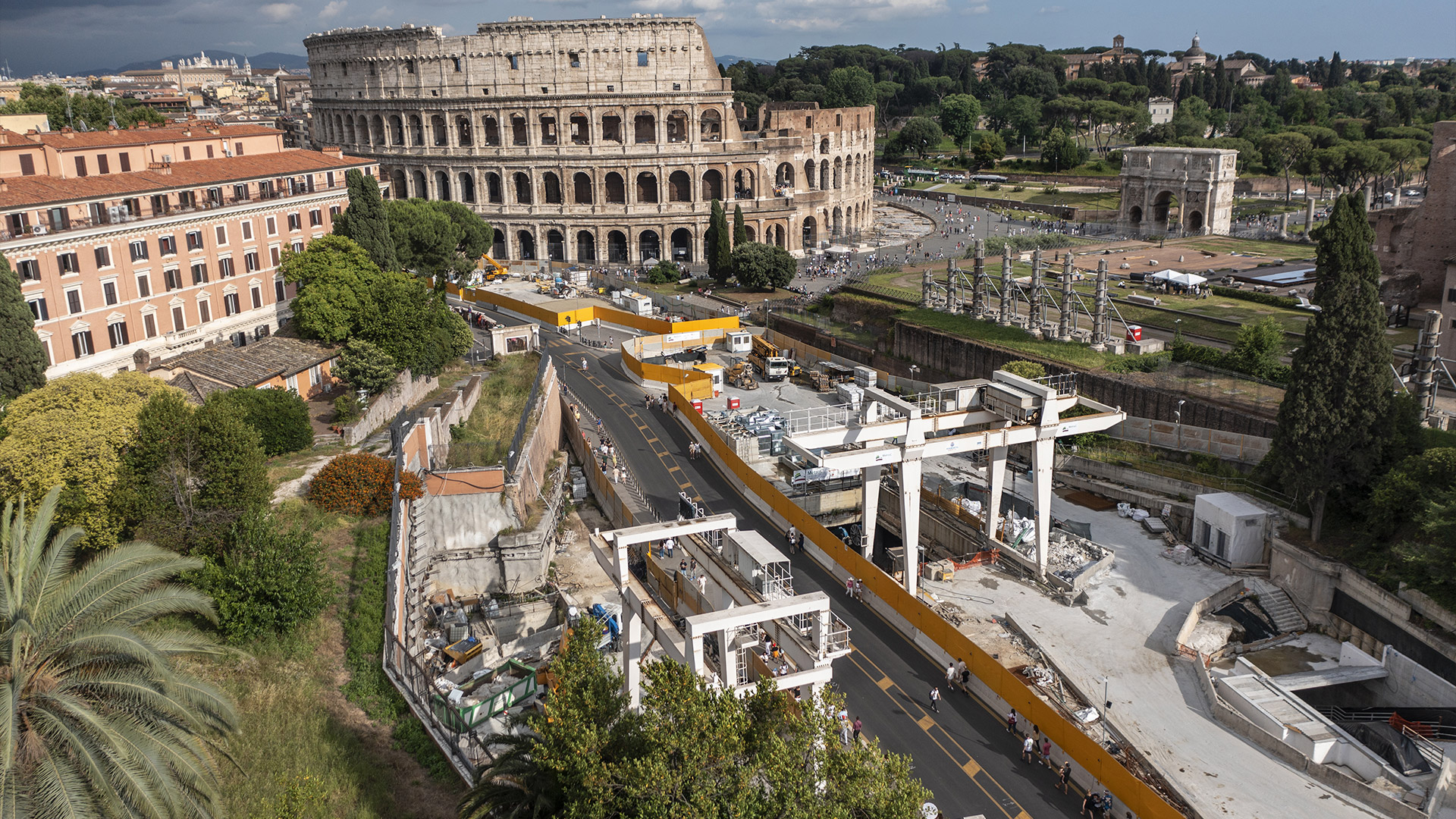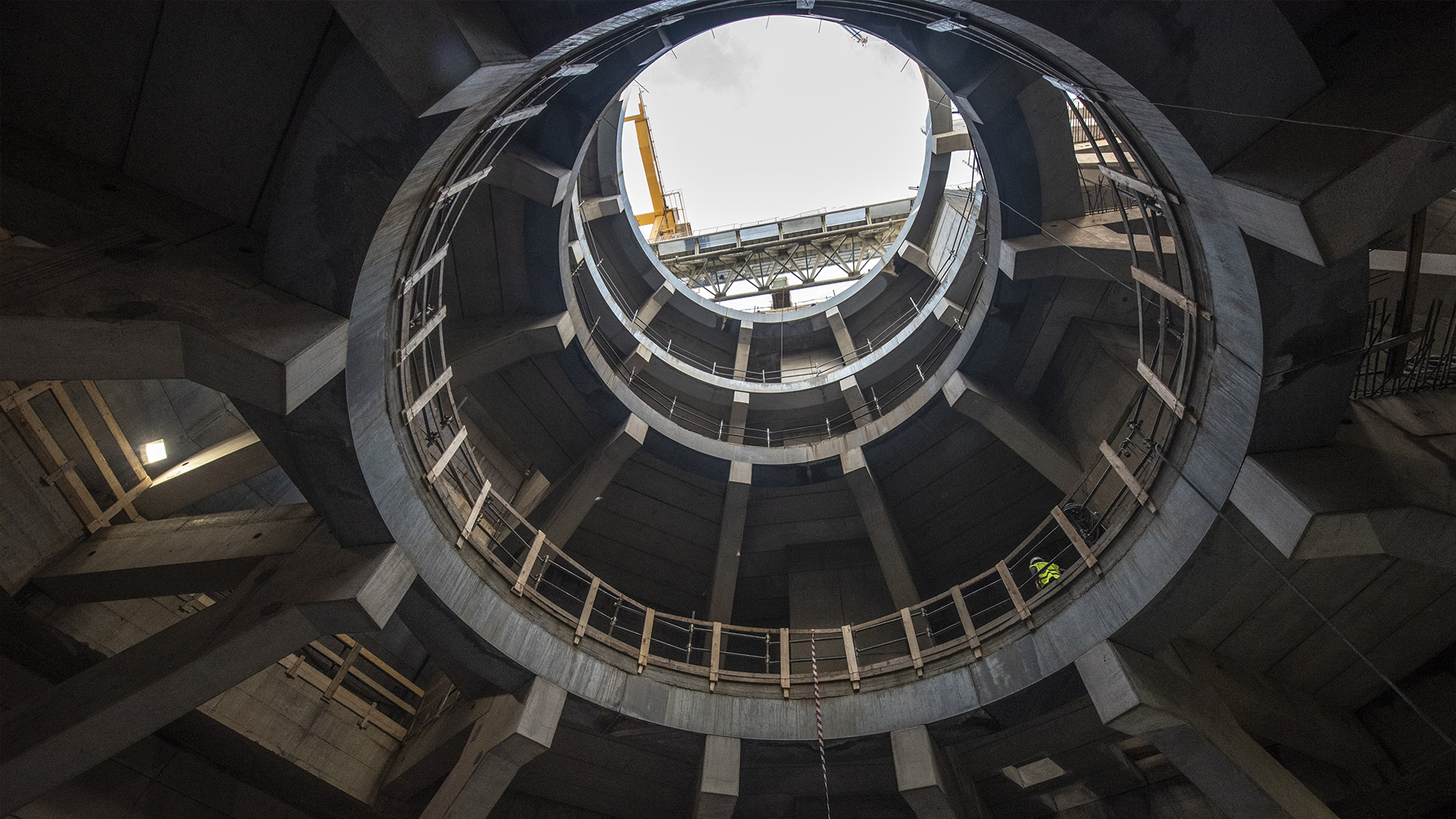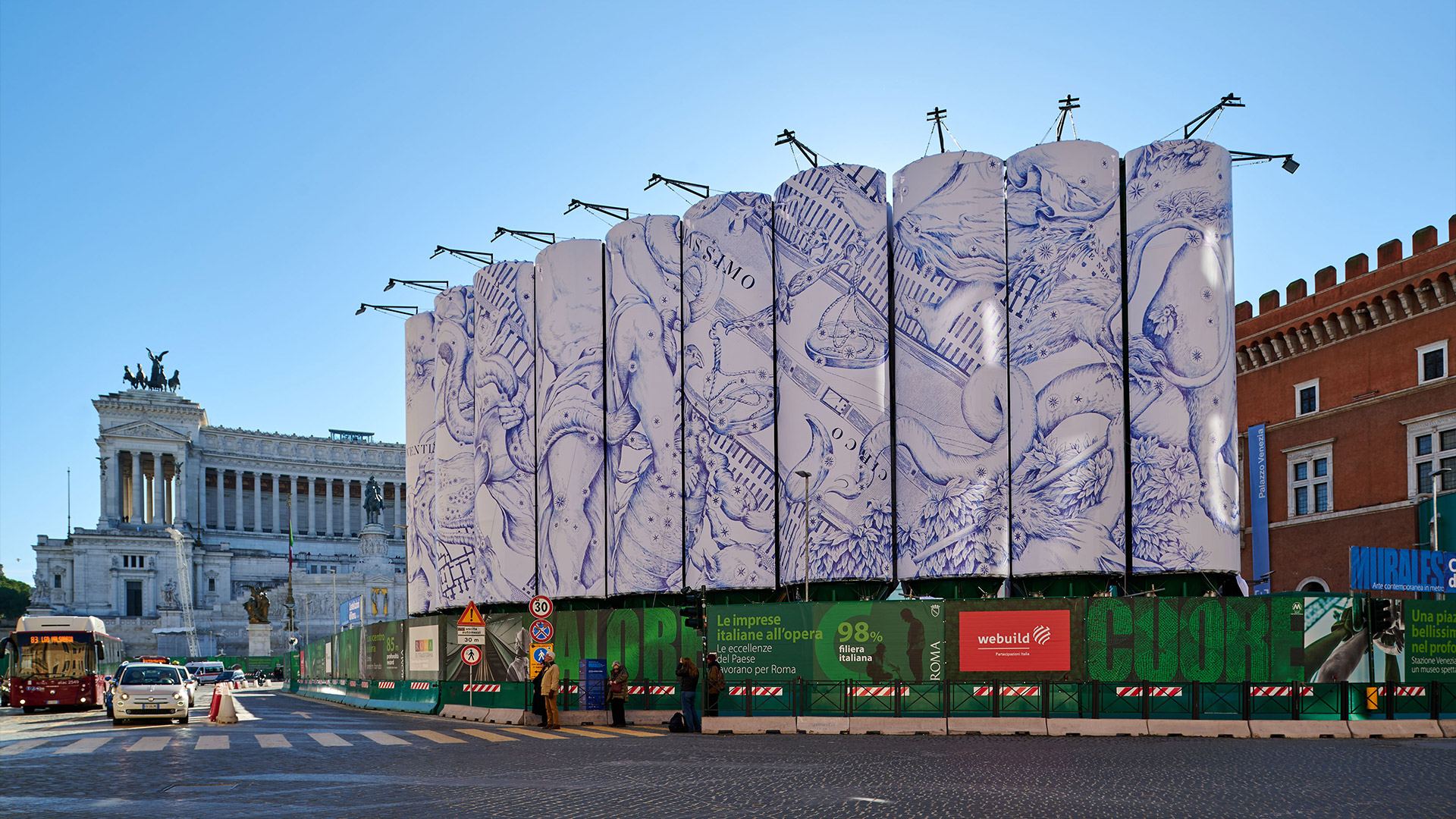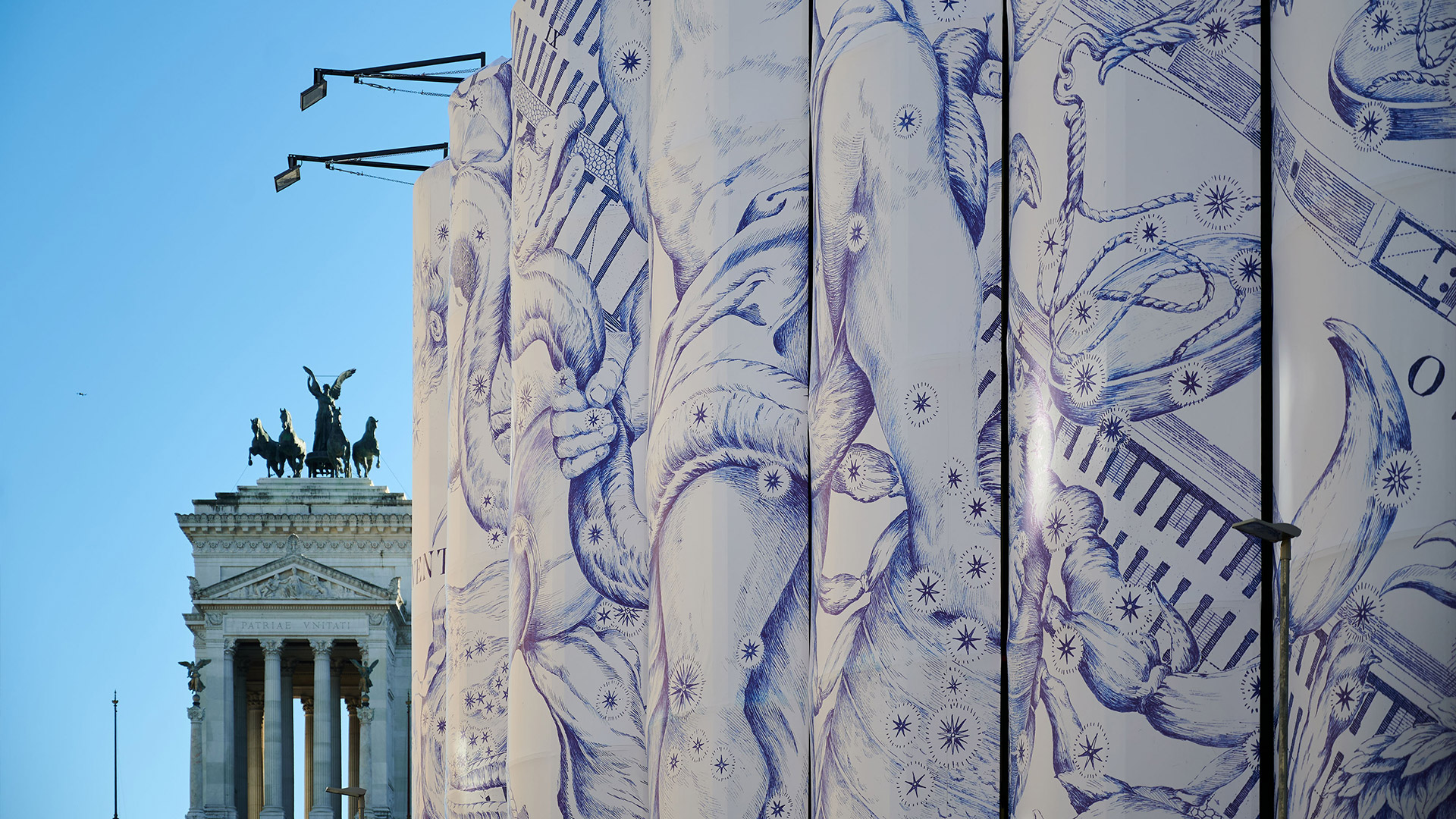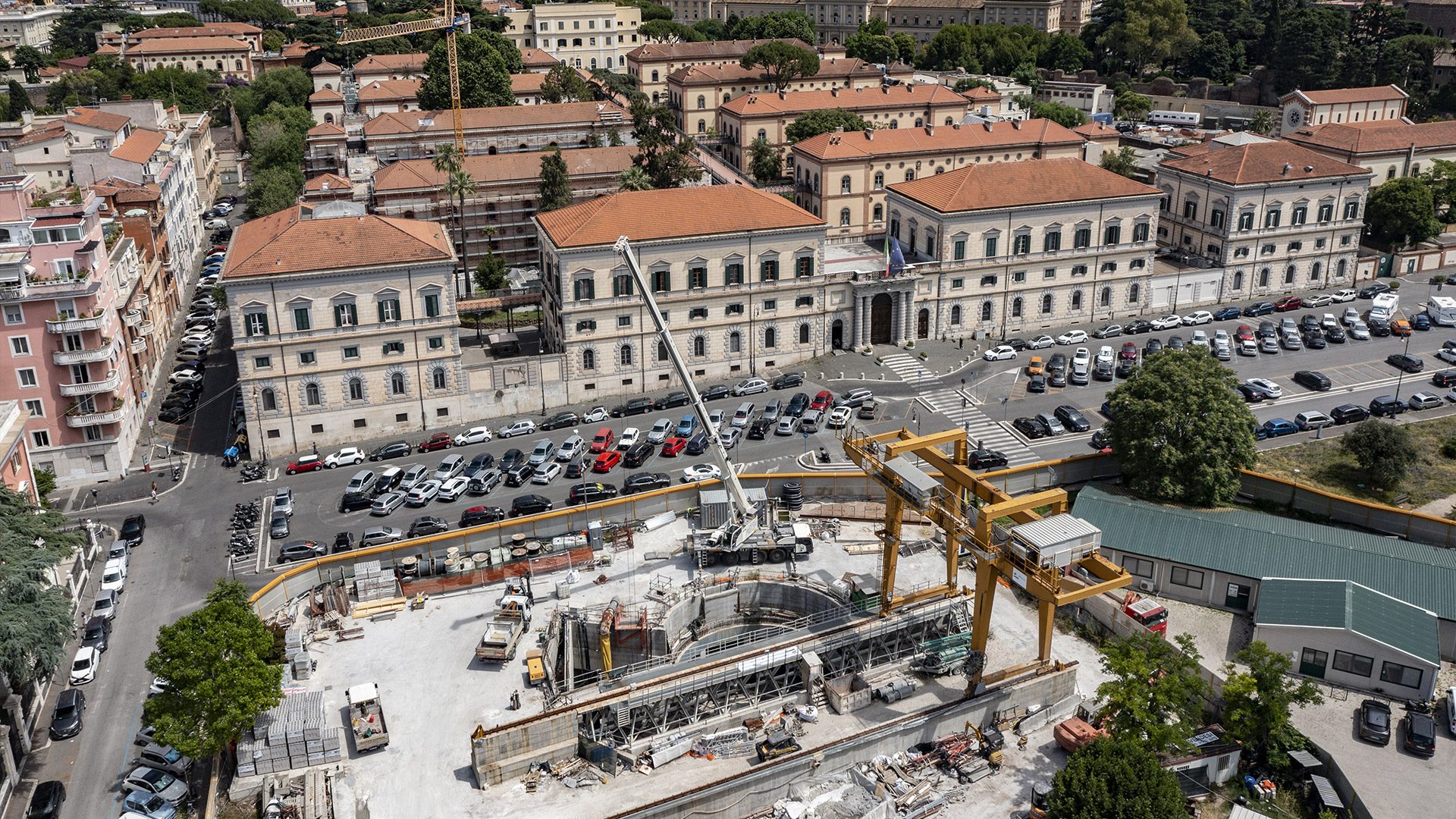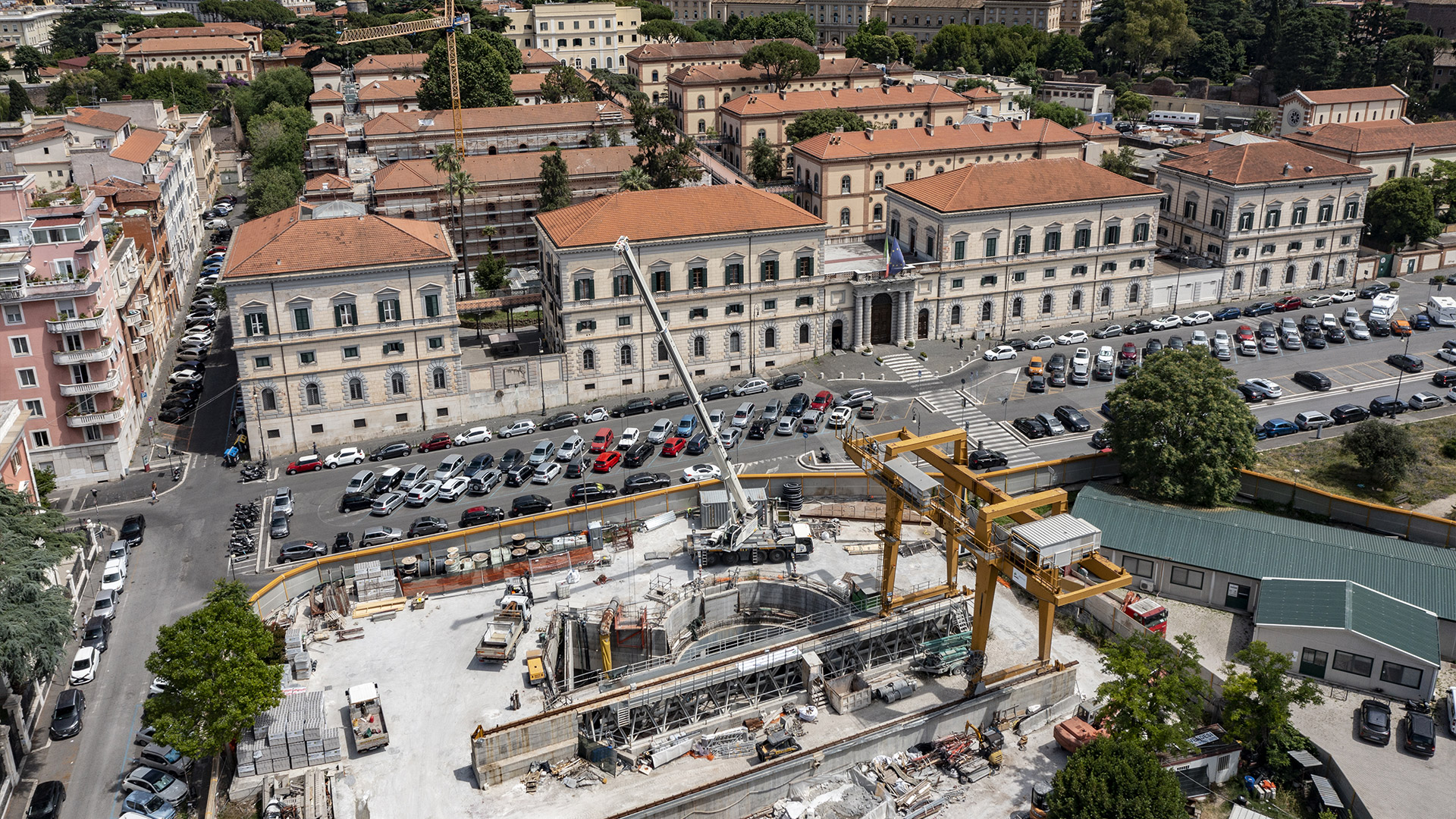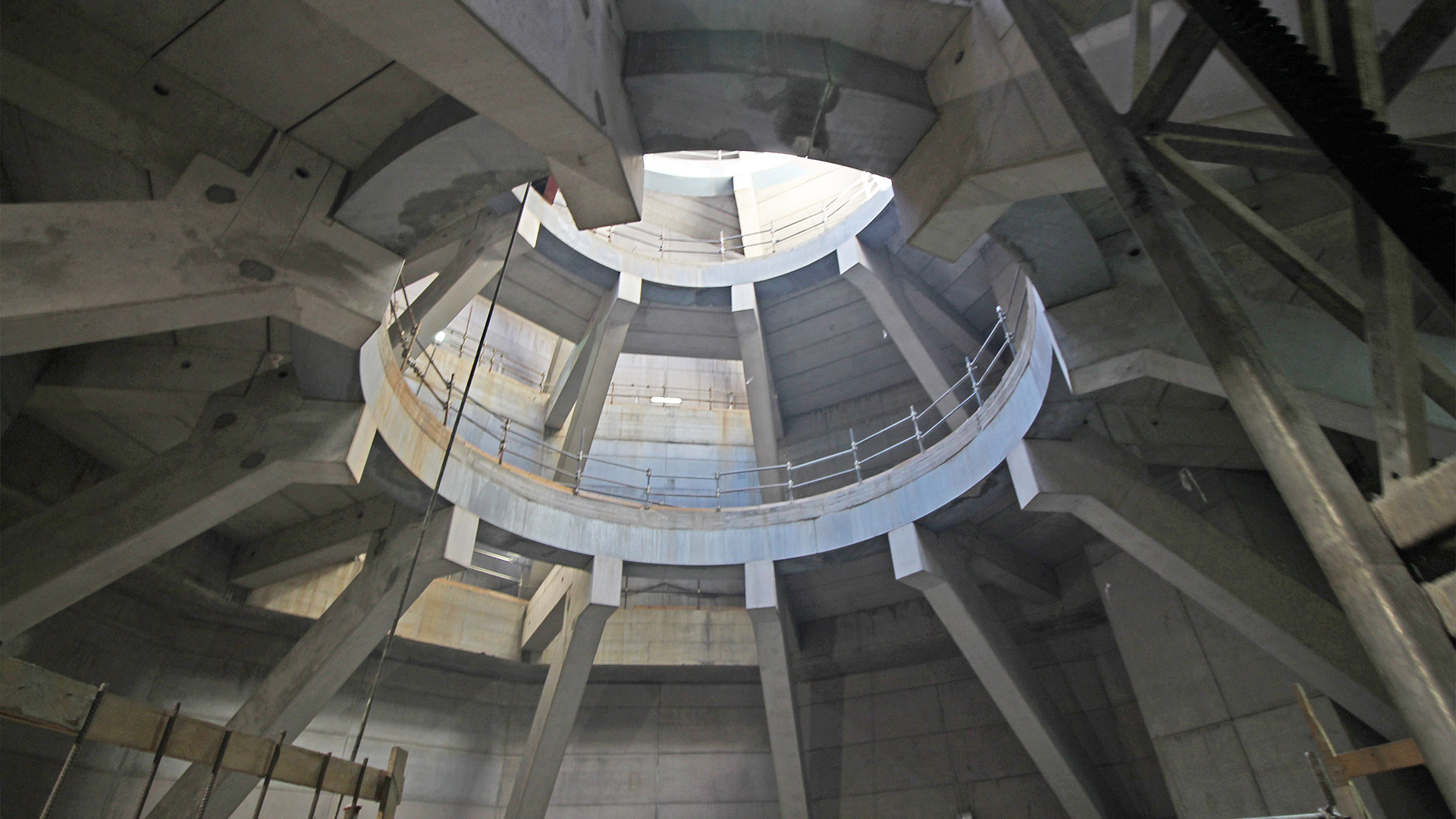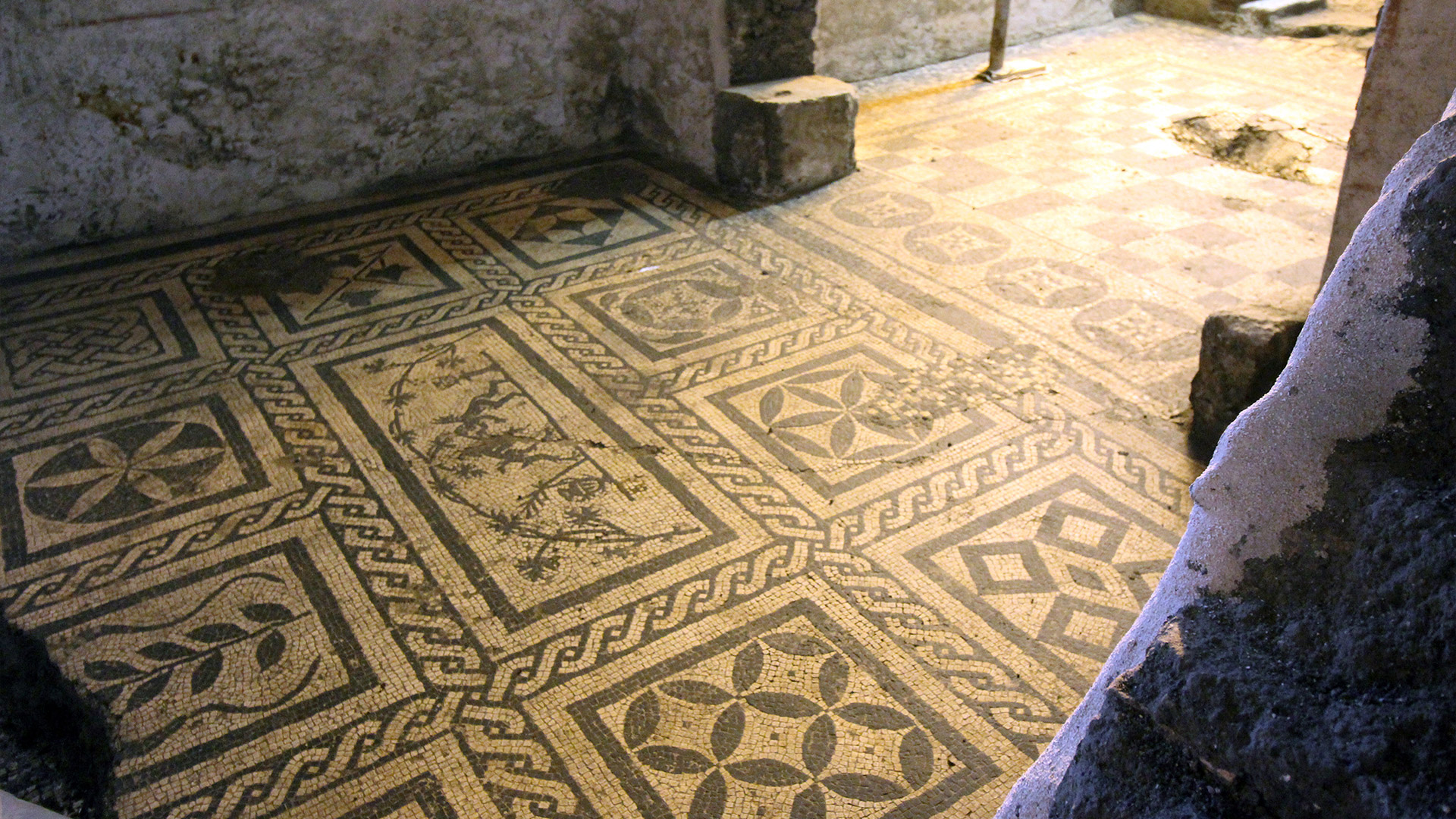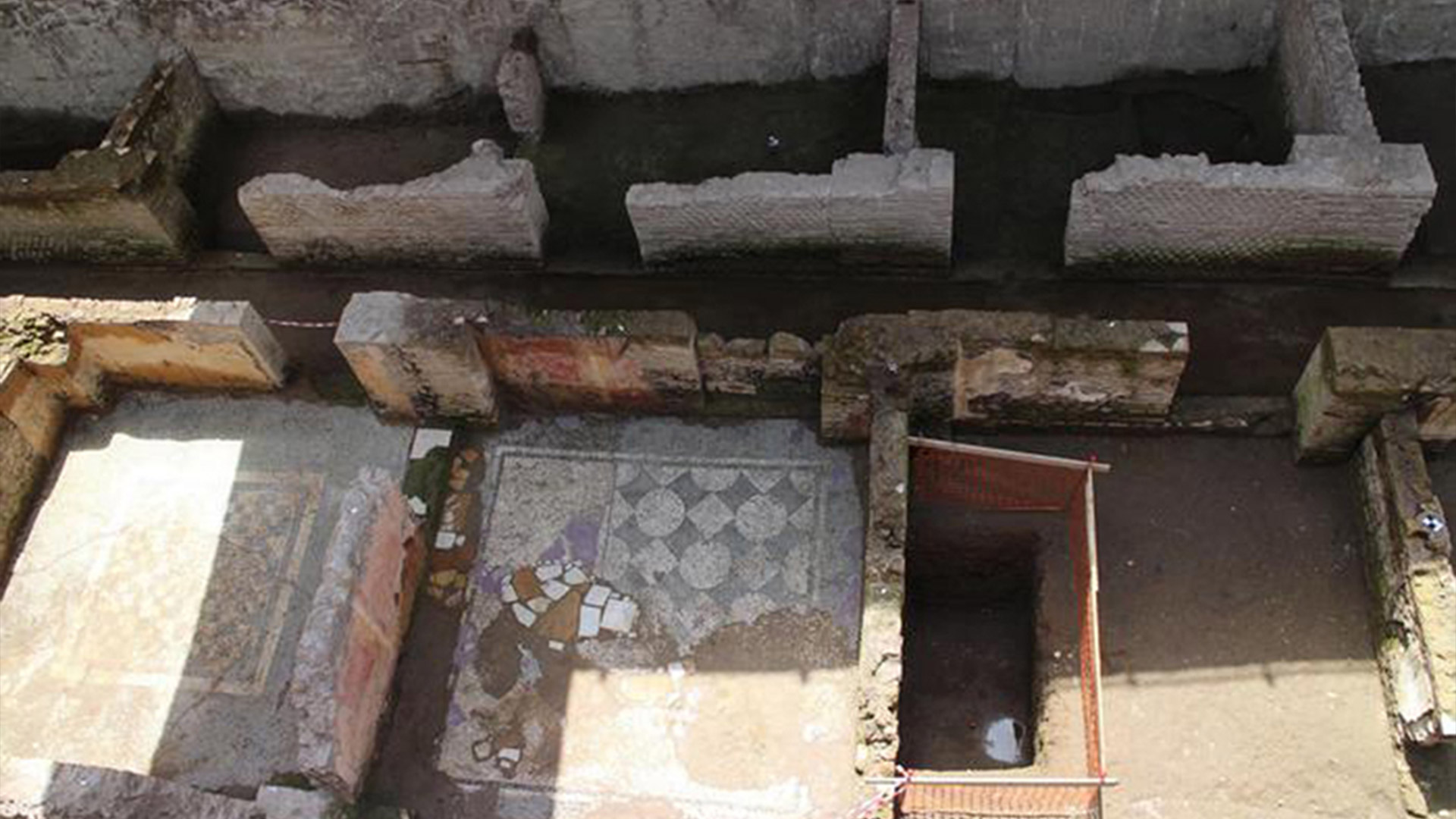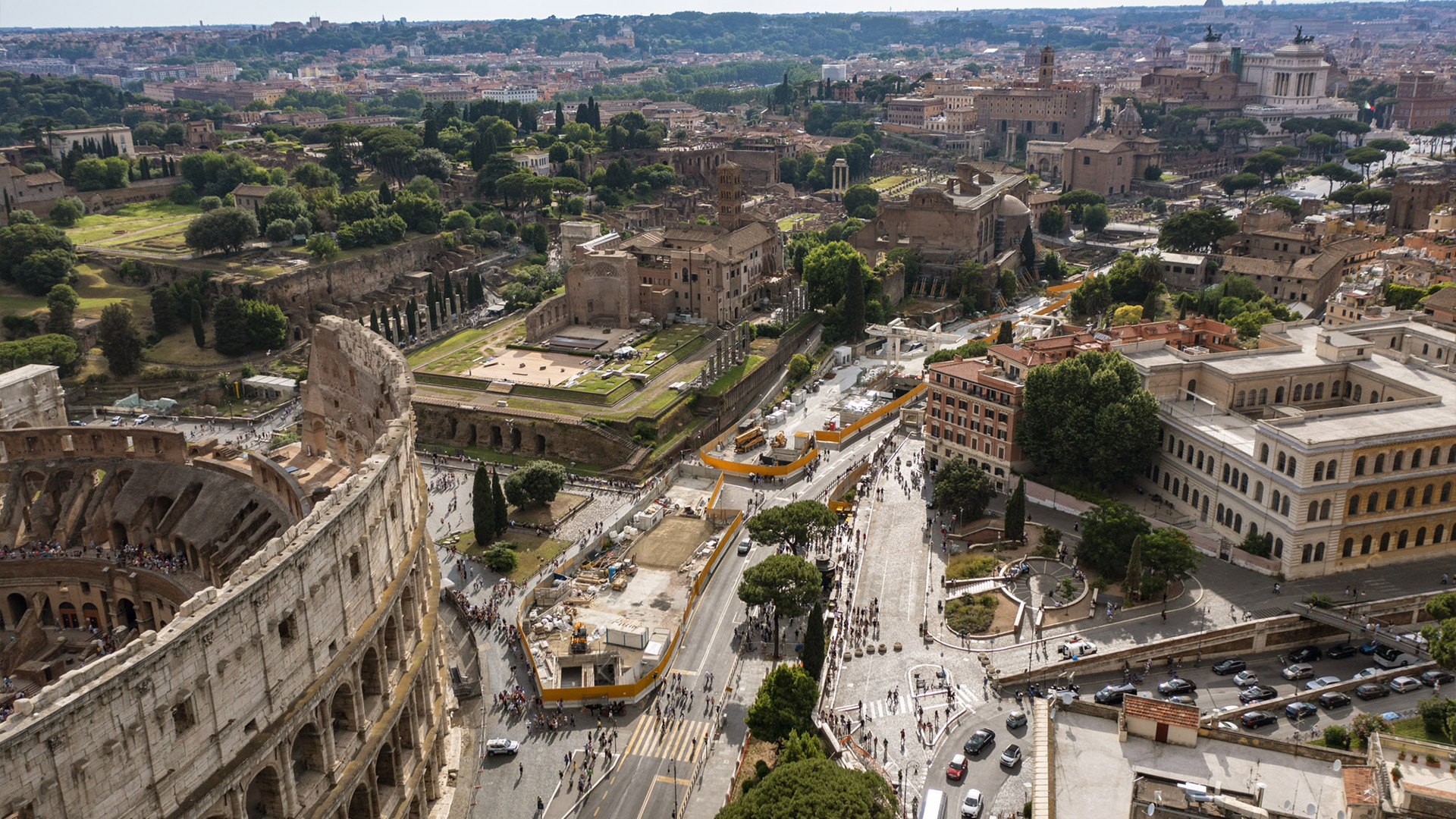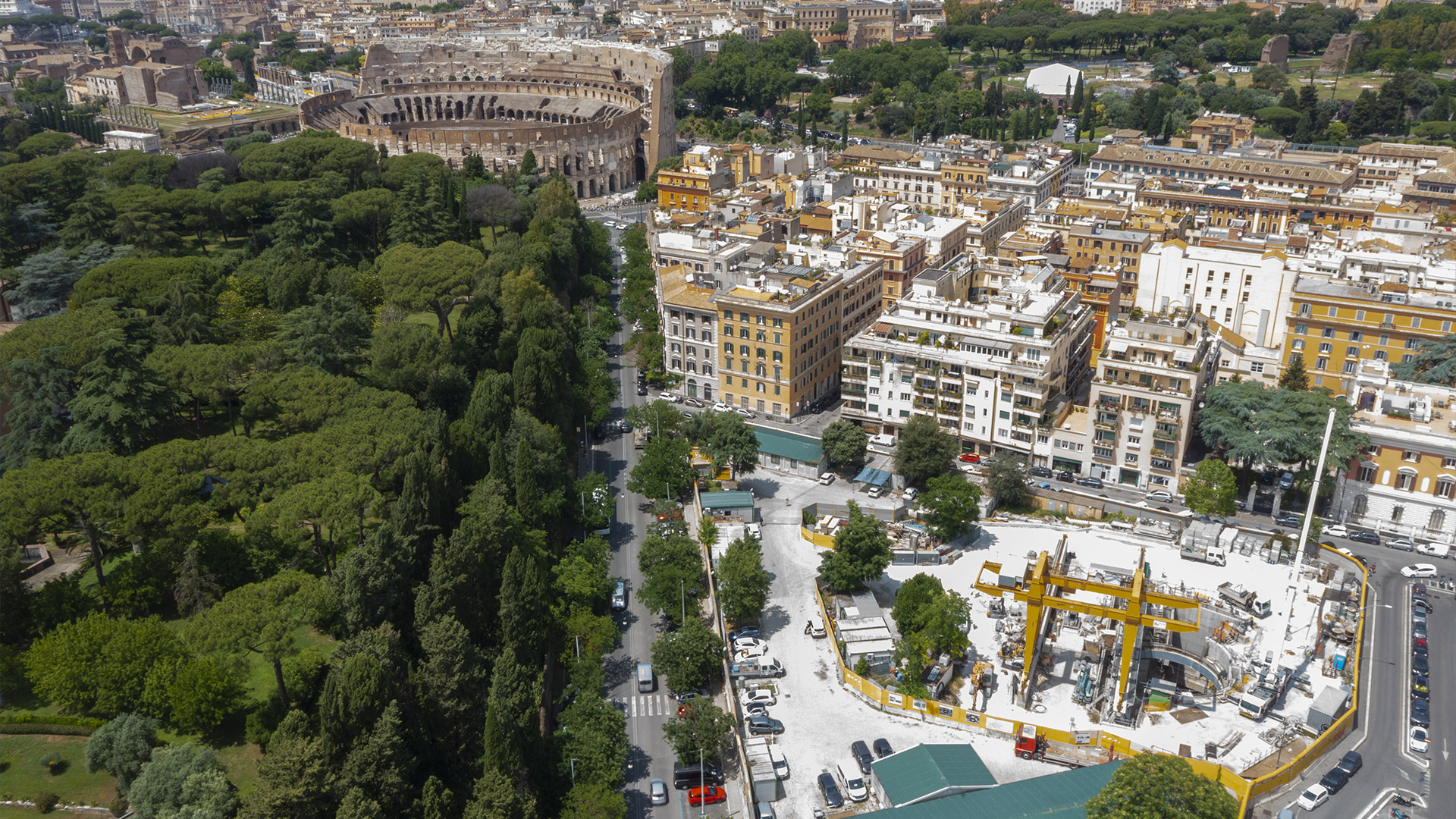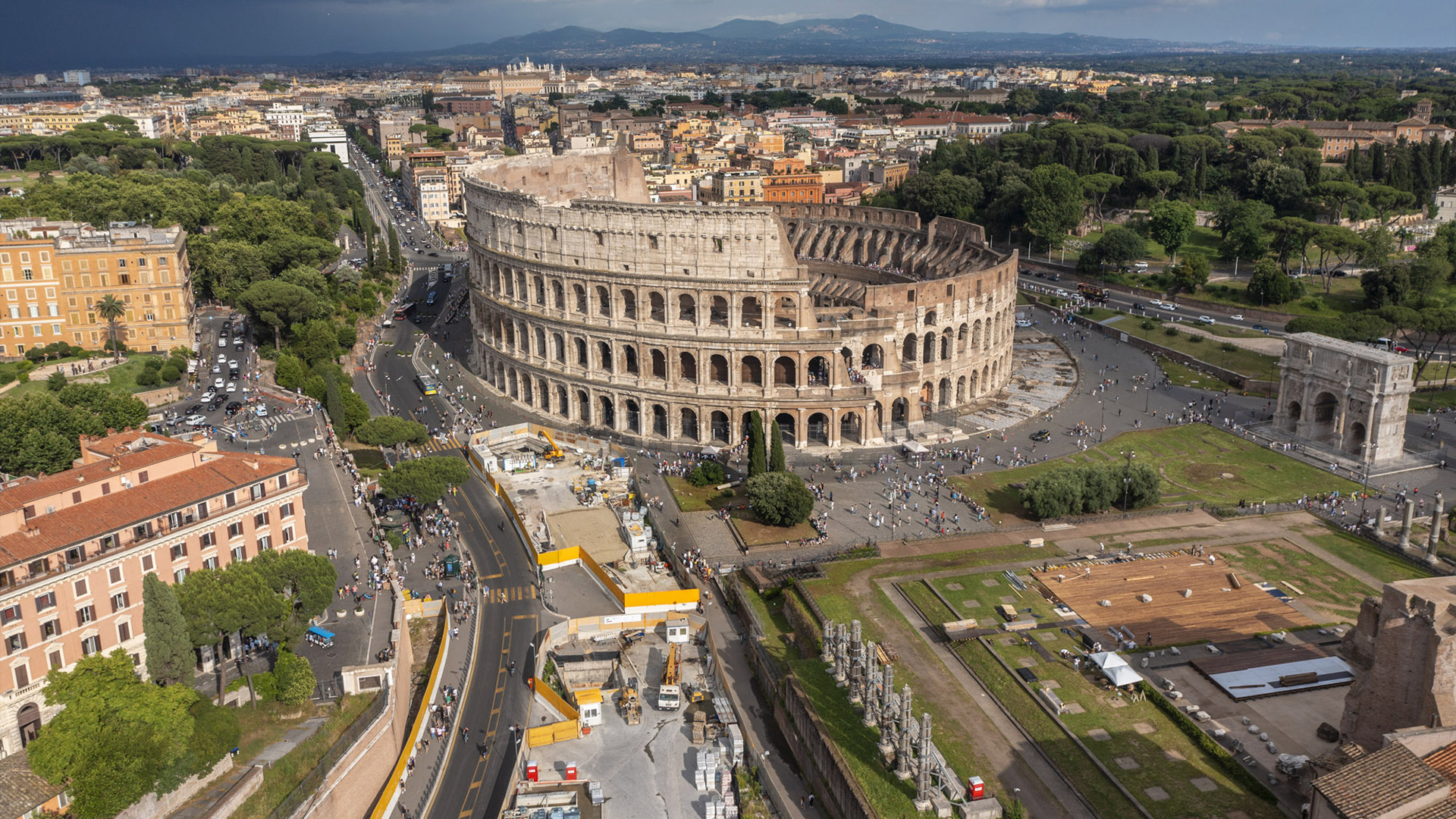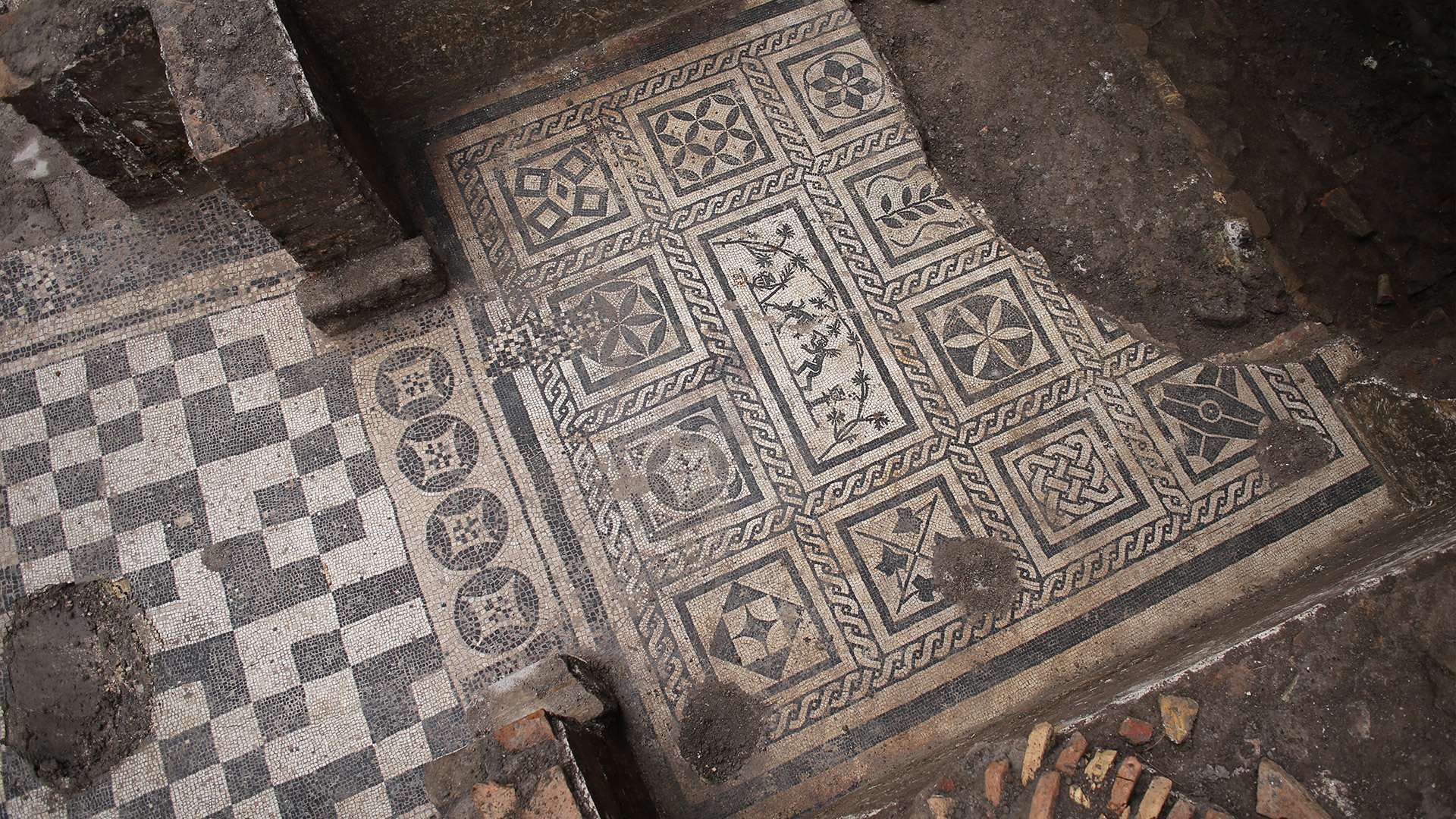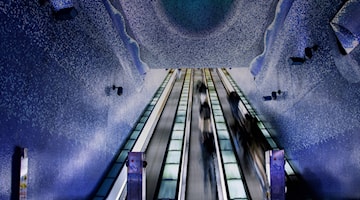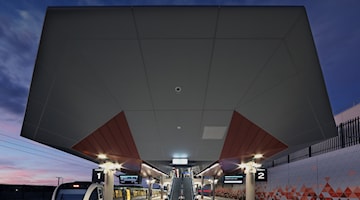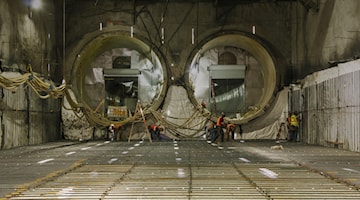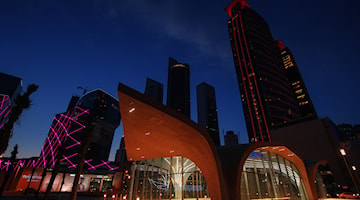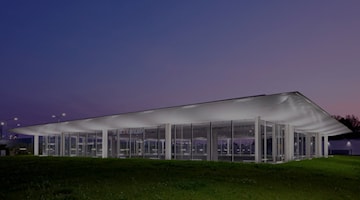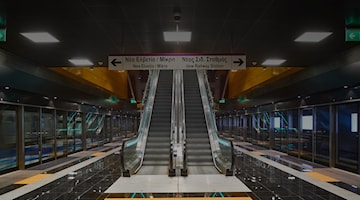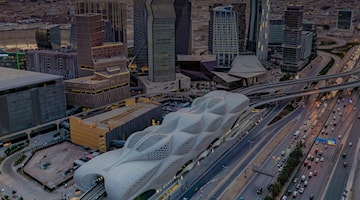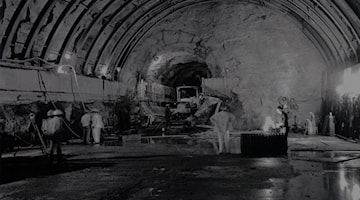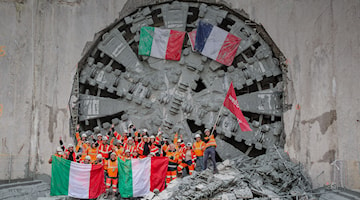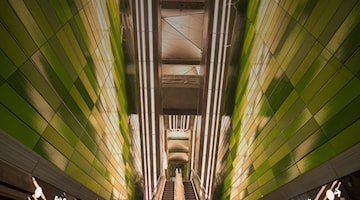A Via Sacra
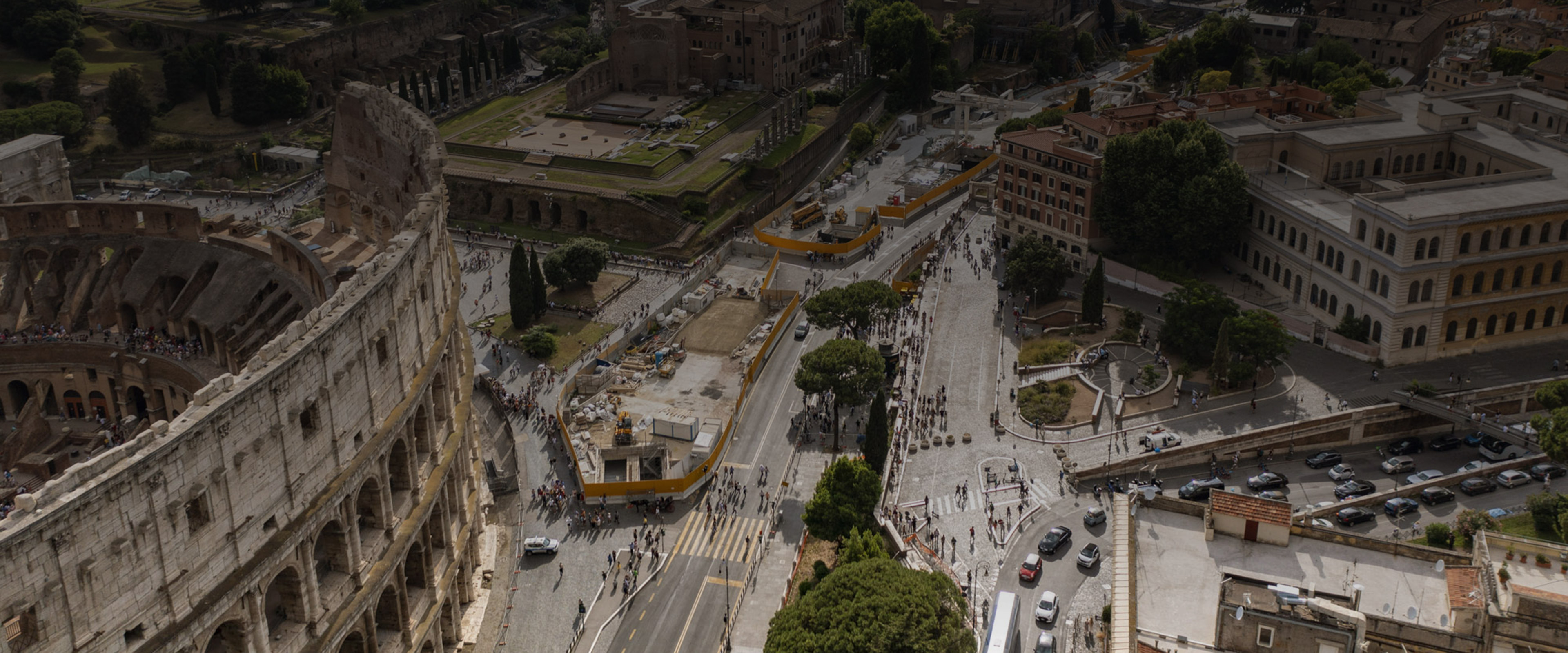
ROME METRO - LINE C, ITALY
An efficient road system (100,000 km of paved highways) was one of the contributing factors in ancient Rome's success, along with its aqueducts and sewers. So said Pliny the Elder, who would not have failed to admire the beauty of the futuristic Line C of the city's metro network: “A Via Sacra, an underground cathedral encapsulating the essence and magnificence of the ancient empire’s architecture”, in the words of art historian Claudio Strinati.
With 29 stations (to date, 22 are operational and three are under construction) from Monte Compatri/Pantano to Clodio/Mazzini, the line is a 26 km route (17 km in underground double-bore tunnels and around 9 km above ground). It has three interchanges with Rome’s other two lines, A and B, 264 escalators, 85 elevators and 1.83 million cubic meters of reinforced concrete structures.
One of the stations under construction is Venezia Station, at the heart of Europe's largest archaeological park, which will be an "archaeo-station" on 8 underground levels and at a depth of 40 meters below the road surface. Line C’s Venezia Station will act as a hub to the surrounding museum complexes, the Vittoriano, Palazzo Venezia and the Fori Imperiali.
Line C is the first driverless metro in Rome, capable of crossing the city from east to west in about 30 minutes, carrying up to 24,000 passengers per hour in each direction, with an estimated annual CO₂ emissions reduction of 310,000 tonnes.
The project involves the excavation of 4.4 million cubic meters, including 585,000 cubic meters in archaeological mode for the removal of large volumes of archaeological deposits (down to 20 meters from the current surface). Among the most important finds are the remains of a majestic portico built under Emperor Claudius behind the Aurelian Walls, and, at the station being built at Porta Metronia, the so-called Commander's House, which dates back to the time of Hadrian (II century CE) and has more than 30 rooms, with unique mosaic floors, all perfectly conserved.
During construction work at Venezia Station, archaeological remains from the Roman and medieval periods were uncovered, including a residential complex dating back to the late Republican and Imperial eras, as well as traces of the ancient Roman Via Flaminia.
As a new link between Rome's city center and its suburbs, Line C is an important urban, social and environmental development, with 98,000 square meters of newly landscaped areas, notably the Gardens in Via Sannio, and 4,300 newly planted trees. Once it has been completed it will have a maximum capacity of approximately 800,000 people every day, equivalent to more than one in five Roman residents.

THE WORK AND THE TECHNIQUE
M³ EXCAVATION
M³ EXCAVATION FOR ARCHAEOLOGICAL STUDIES AND SURVEYS
M³ CONCRETE
T STEEL
KM TRACK
M EXCAVATION DIAMETER
TRAINS
STATIONS
The Line C project, awarded to the Metro C S.c.p.A. consortium of which Webuild Group is the lead company, posed a considerable engineering challenge given the unique nature of the area involved, a UNESCO World Heritage Site, the innovative construction technologies used, and the monitoring of the historical assets and monuments on the surface and along the underground route.

CULTURAL INSIGHTS
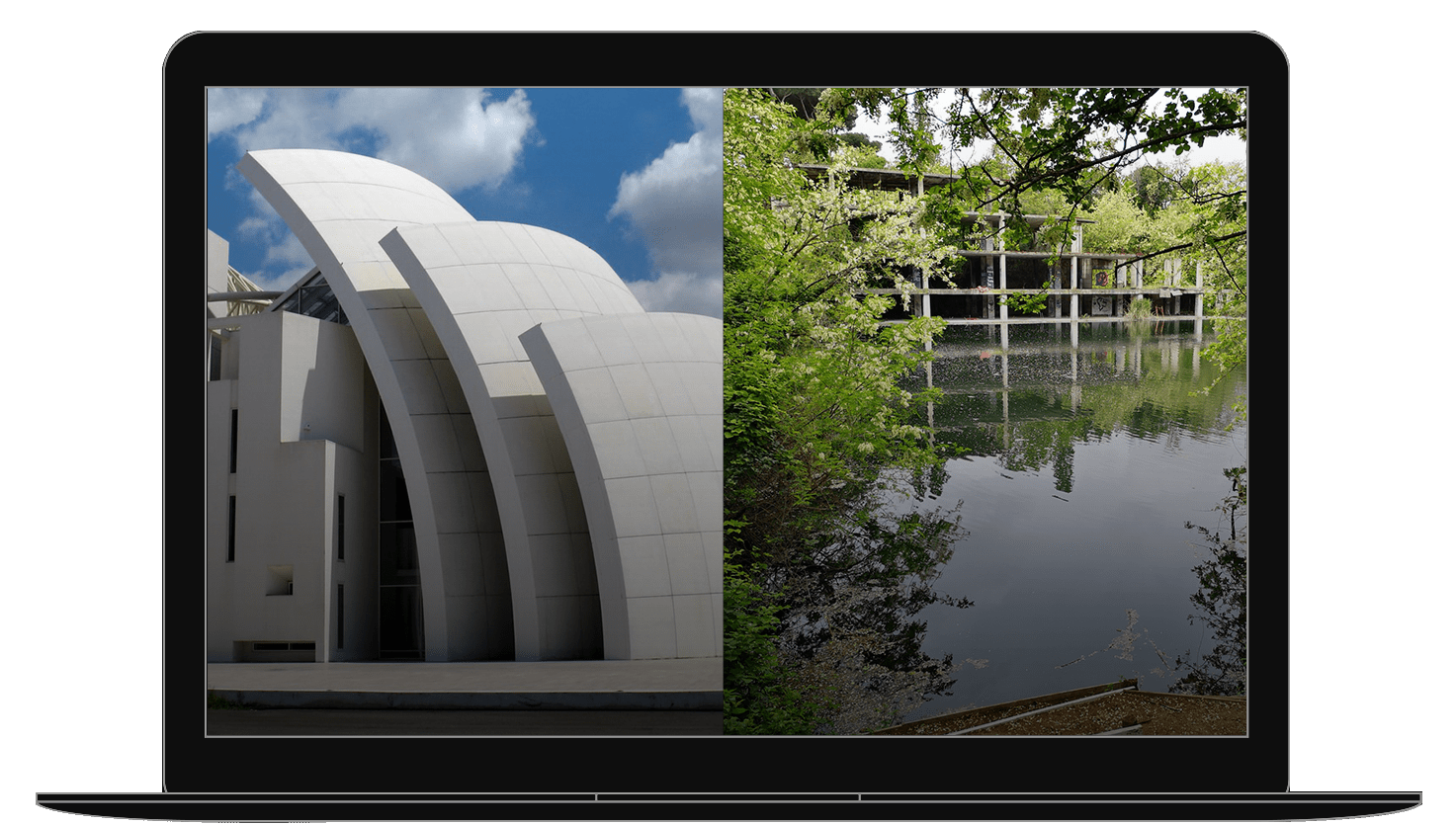

Respecting the past to move into the future
The construction of Rome’s third metro line is a major engineering challenge and a valuable opportunity to enhance Rome's archaeological and historical heritage.
Many of the stations have been built in close cooperation with the Ministry of Culture and the respective Superintendencies to improve life in the city and relieve traffic congestion, while protecting and promoting the capital's archaeological, historical, and cultural heritage.
San Giovanni Station, which opened in 2018 and was the first to adopt museographic interior design criteria, is an important example of this. Some artefacts from the excavation areas have been restored and displayed inside the station to create a unique immersive experience for many international and domestic passengers.
passengers per hour in each direction
tonnes of CO₂ emissions saved annually





